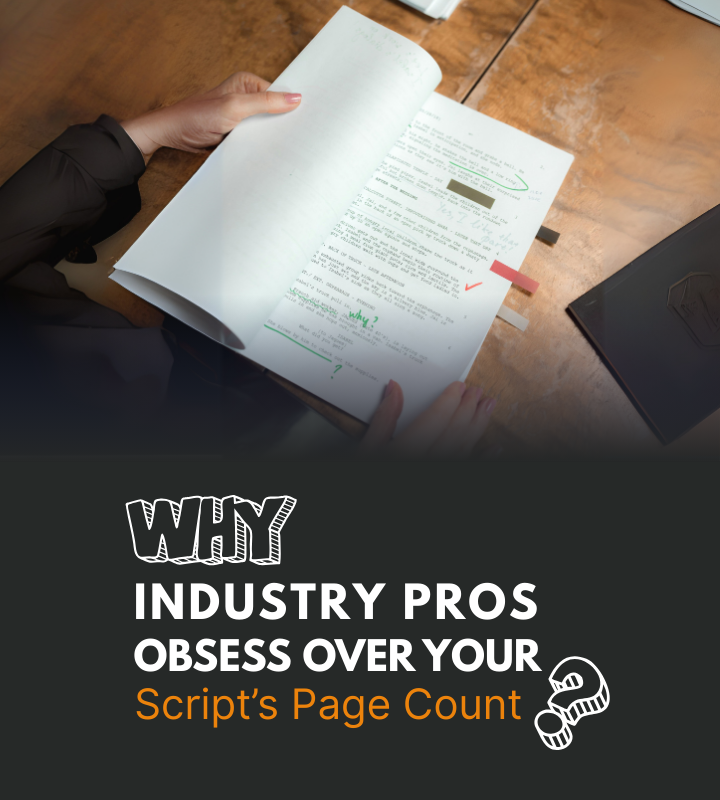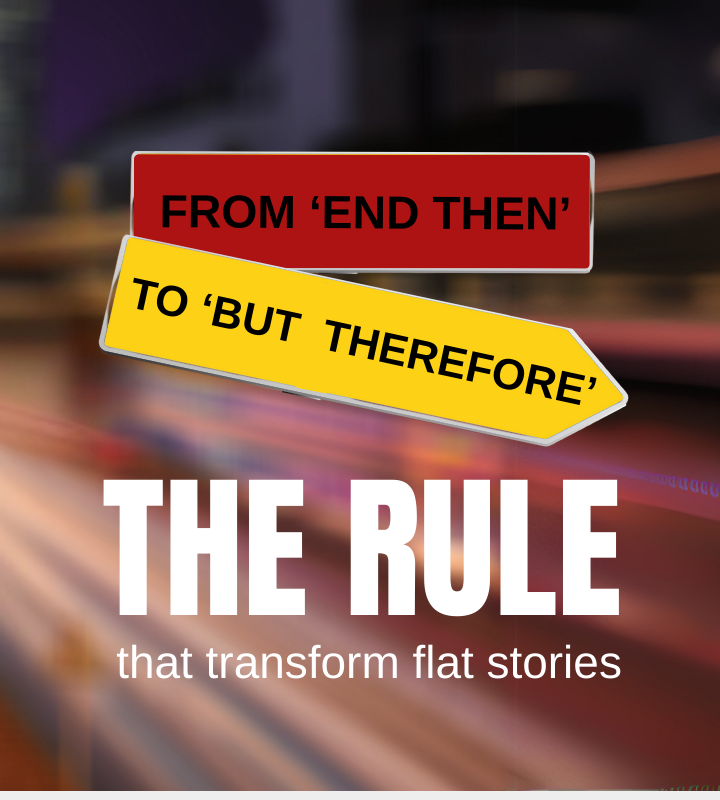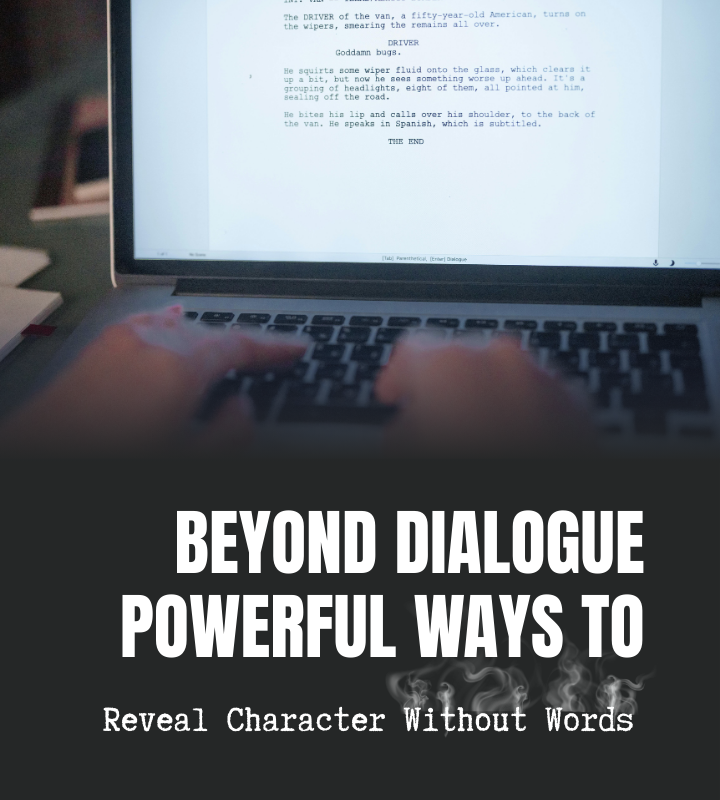Every screenwriter steps onto the battlefield of creativity armed with a great idea—but even the strongest concepts can be blown apart by hidden mistakes. These aren’t just minor slip-ups; they’re landmines, buried in the soil of inexperience or haste, waiting to derail your script’s momentum.
What are these invisible traps? They’re the errors that make industry readers sigh, roll their eyes, or—worst of all—stop reading. Some are forgivable; others scream "amateur." But all of them steal your script’s potential before it even gets a fair shot.
Whether you’re a rookie or a veteran, these pitfalls don’t discriminate. Below, we map out the 15 deadliest screenwriting landmines—and how to defuse them before they explode your story.
1. The Blueprint Blunder
Jumping into a script without a plan isn’t "pantsing"—it’s self-sabotage. Imagine building a house without blueprints: you’ll waste time tearing down walls, rewriting entire acts, and losing your story in the rubble
Landmine Effect: Unfocused drafts, pacing whiplash, and a script that feels like a first draft—even after 10 rewrites.
Defuse It:
- Answer these before Page 1: What’s the inciting incident? Who’s the antagonist? What’s the climax?
- Tools: Beat sheets, mind maps, or a one-page "story spine" can save months of rewriting
2. Formatting Freefall
Screenplays aren’t novels. Writing action lines like prose or misplacing dialogue margins screams "I’ve never read a script." And readers notice.
Landmine Effect: Instant loss of credibility. Even brilliant stories get tossed if they look like amateur hour.
Defuse It:
- Study produced scripts (The Social Network, Pulp Fiction). Notice the rhythm.
3. The "Originality Paradox"
Landmine Effect: Obsessing over being 100% unique often creates unrelatable nonsense. Remember: Titanic was "just" a love story on a sinking ship—execution matters more than novelty.
Defuse It:
- The 10% Twist Principle: Take a familiar structure, change ONE key element (e.g., Die Hard on a plane → Air Force One)
- "Steal Like an Artist": Study how Pixar recycles the Hero's Journey with fresh coats of paint
- Audience GPS Check: If test readers ask "What's this supposed to be?", you've lost them
4. Research Roulette: Gambling With Facts
Landmine Effect: Audiences will forgive artistic license—but not lazy inaccuracies that rip them out of your story. Get WWII weaponry wrong? History buffs will riot. Misrepresent a profession? Insiders will mock it. Your script’s credibility implodes.
Defuse It:
- The Tarantino Method: Like Inglourious Basterds, twist history intentionally—but nail the era’s texture (costumes, slang, social rules).
- Interview experts: A 30-minute chat with a nurse can save your medical drama from becoming a comedy.
- "But what if?" test: For every fictionalized element, ask: "Does this break the audience’s trust?"
5. The Length Trap: Stretching or Squeezing Your Story to Death
Landmine Effect: A 180-page epic about a man buying coffee? Snore. A 12-page thriller with 3 plot twists? Whiplash. Industry readers spot padding or rushing instantly—it screams "amateur
Defuse It:
- Genre = Blueprint: Rom-com? Stick to 90-100 pages. Horror? 85-100. Know the rules before you break them.
- The "So What?" Cut: For every scene, ask: "Does this directly push the plot or deepen character?" If not, delete.
- Short Film Hack: Can your idea work as a 5-page proof of concept? If not, it’s not "tight"—it’s underbaked.
6. Cast Clutter: When Your Script Becomes a Census
Landmine Effect: Readers shouldn’t need a spreadsheet to track your characters. More ≠ better. Every irrelevant role dilutes tension and steals screen time from the ones who matter.
Defuse It:
- The 12 Angry Men Rule: If a character doesn’t have a unique POV that affects the plot, merge or cut them.
- "Kill Your Darlings" 2.0: That quirky barista with one funny line? Give it to your protagonist’s best friend instead.
- Family Tree Test: Can you describe each character’s arc in 3 words? If not, simplify.
7. The Motivation Vacuum: Why Should We Care?
Landmine Effect: A protagonist without a burning desire is like a rocket without fuel—all setup, no liftoff. Audiences crave obsession, not meandering.
Defuse It:
- The Taken Template: "Save my daughter" = primal. "Figure out life" = snooze. Make it visceral.
- "Why Now?" Test: If your character could pursue their goal next year, the stakes aren’t urgent enough.
- Secret Weapon: Give them a flaw that directly conflicts with their goal (e.g., a coward who must become a hero).
8. Identity Crisis: The Name-Changing Debacle
Landmine Effect: Introducing "Mysterious Stranger" only to rename him "Detective Harris" on page 30? You've just confused the casting director, actors, and worst of all—your reader's mental tracking system.
Defuse It:
- The Hitchcock Solution: Reveal true names through action (e.g., a badge close-up) rather than text changes
- Production Reality Check: Ask yourself: "Would this require an extra line in the budget?" If yes, simplify
- Mystery Alternative: Use visual obscuring (shadows, POV shots) rather than name games
9. The Inner Void: Characters Without Psychological Warfare
Landmine Effect: Michael Corleone without his "family vs morality" conflict? Just a boring mobster. Internal struggles are the invisible grenades that make characters explode off the page.
Defuse It:
- The Dual-Axis Method: Give every character:
- External Goal (rescue the princess)
- Internal Need (learn to trust others)
- Contradiction Principle: Make their best quality also their fatal flaw (e.g., a compassionate hero who can't say no)
- "Wrong Choice" Test: Force them to pick between two bad options in Act 2
10. Description Overload: The Novelist's Trap
Landmine Effect: Three paragraphs describing a diner's wallpaper pattern? You're not writing a script—you're strangling the cinematographer's creativity. Screenwriting is suggestive art, not exhaustive documentation.
Defuse It:
- The 1-2 Punch Rule:
- Essential visuals only (e.g., "Diner stuck in the 1950s")
- One telling detail (e.g., "A jukebox playing Elvis on infinite loop")
- Department Test: Ask: "Would this help the:
- Production designer? (✓)
- Actor? (✓)
- Audience's understanding? (✓)
- If not, cut it
- Poetic License Killswitch: Replace adjectives with verbs ("cracked vinyl booths" → "vinyl booths crack under weight")
11. Trope Quicksand: When Clichés Swallow Your Story Whole
Landmine Effect: That "chosen one" prophecy or "evil twin" reveal might feel comfortable—like broken-in shoes. But audiences? They've worn these same shoes 1000 times. Your script becomes forgettable the moment it feels like a paint-by-numbers exercise.
Defuse It:
- The "Trojan Horse" Technique: Wrap a cliché in fresh context (e.g., The Matrix = chosen one myth + cyberpunk philosophy)
- Post-It Note Test: Label every trope in your script. If any page has >3, rewrite that section
- Cliché Inversion: Take "damsel in distress," make her the villain faking weakness (Gone Girl style)
12. Conflict Drought: Where Stakes Go to Die
Landmine Effect: No conflict = no engine. Your script becomes a parked car where characters chat about the weather. Readers will yawn, producers will check their phones, and your story flatlines by page 15.
Defuse It:
- The "But/Therefore" Rule: Replace "and then" with these words to force causation (South Park creators' trick)
- Obstacle Blender: Every 10 pages, ask: "What's physically/emotionally blocking the protagonist RIGHT NOW?"
- Stakes Thermometer: If the worst outcome is "mild embarrassment," you're writing a commercial, not a drama
13. The Exposition Avalanche: Burying Your Audience in Backstory
Landmine Effect: That 5-minute monologue about the protagonist's childhood trauma? It's not "deep"—it's a dump truck unloading onto the audience. Modern viewers hate being spoon-fed.
Defuse It:
- The In Media Res Fix: Start mid-action, reveal backstory through:
- Environmental details (e.g., war medals on a wall)
- Off-hand dialogue ("Your sister's birthday is tomorrow... like last year")
- The "Jaws" Method: Let the audience piece together the shark's threat from fragments (no marine biology lectures)
- 10% Rule: Backstory should occupy ≤10% of total dialogue
14. Rewriting Paralysis: When Perfectionism Kills Progress
Landmine Effect: Stuck in an endless loop of Draft 27.1b? Congratulations—you've just turned your script into Sisifos'un kayası. Industry readers can smell "overworked but underwhelming" from page 1.
Defuse It:
- The 3-Draft Rule:
- Vomit Draft (Just get it out)
- Surgical Draft (Fix structure/characters)
- Polish Draft (Dialogue/prose)
- "Kill Your Darlings" Deadline: Give yourself 48 hours to cut beloved scenes that don't serve the plot
- Shooting Script Reality Check: Remember—even Casablanca had unfinished scenes during filming
15. Genre Schizophrenia: Identity Crisis on the Page
Landmine Effect: A rom-com that turns into slasher horror by Act 3? You haven't created bold innovation—you've built a Frankenstein monster that alienates every audience segment.
Defuse It:
- The "North Star" Genre Test: Ask:
- What's the primary genre? (Must be ONE answer)
- What % of the script belongs to it? (<70% = problem)
- Tarantino's Blending Trick: Pulp Fiction isn't "crime + romance + comedy"—it's crime with flavor sprinkles
- Audience Contract: Your first 15 pages set genre expectations—breaking this is like serving steak to vegetarians
Bonus-1: The Dialogue Dinosaur: Prehistoric Speech in Modern Scripts
Landmine Effect: Characters who sound like 19th-century novel narrators? Exposition-heavy "As you know, Bob..." lines? Your script becomes a museum piece rather than a living story.
Defuse It:
- The "Real People" Test: Record strangers' conversations—notice the:
- Interruptions
- Half-finished thoughts
- Subtext (90% isn't spoken)
- Exposition Jujitsu: Turn info-dumps into conflict (e.g., The Social Network's opening breakup)
- Silent Treatment: For every 5 dialogue lines, add 1 silent character moment (visual storytelling!)
Bonus-2:: The "Theme Trombone",
Landmine Effect: When characters start delivering thesis statements about "the human condition," you haven't written a screenplay—you've created a philosophy lecture with scene breaks.
Defuse It:
- The Breaking Bad Method: Let Walter White's actions (not speeches) explore moral decay
- Prop Semiotics: Use objects like Citizen Kane's "Rosebud" to embody themes
- Anti-Theme Test: Could someone summarize your theme without quoting your dialogue?











 Upload Script
Upload Script 




